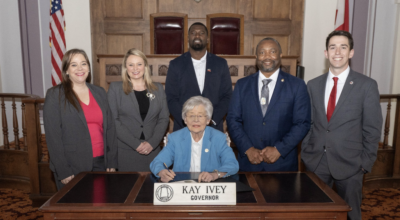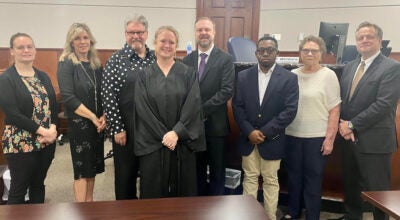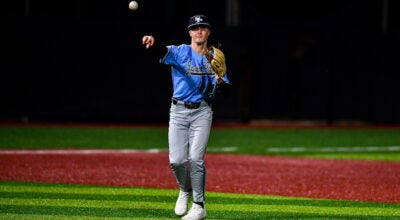Column: Multi-sport high school athletes get early advantage in life
Published 3:38 pm Monday, January 29, 2018
By ALEC ETHEREDGE | Sports Editor
Times are changing and it’s a good thing.
While the days of starting gymnastics as soon as you can walk and figure skating a month after you can walk in hopes of becoming an Olympic gold medalist at the age of 16 are still here, there’s been much more transition from the Tiger Woods, Simone Biles and Michelle Kwans of the world to more of the Bo Jackson approach.
Tiger Woods was swinging a golf club before he could even stand, making dominating the game of golf his main purpose, but just imagine if he could have been even better.
While golf is one of those games that requires hours and hours of practice, it is very possible that with the use of multiple sports, Woods could have sustained an even more distinguished career or learned to better handle life off the course.
The ability of playing multiple sports professionally is one that’s not possible for most, but the ability to do so in your childhood and at the high school level is more than possible, it’s conceivable.
While several Shelby County high school athletes play at least two sports and do very well at both, there are very few like Michael Hiers at Briarwood Christian School who play three sports.
Hiers helped lead the basketball team to the postseason for the first time in 10 years in 2017, helped lead the baseball team to an incredible season of 30-plus wins later that spring and then went on to throw for 2,000-plus yards to lead the Lions to a state championship appearance as the starting quarterback this past fall.
Now averaging 20-plus points per game on the basketball court, Hiers is almost done with two legs of his three sports for the final time in a Briarwood uniform, but the lessons he has learned are what show the importance of being a cross-sport athlete, not just on the field, but off the field.
Being able to compete in multiple sports, much less star in them, is something college coaches are putting more and more emphasis on when it comes to recruiting because it shows a player’s natural ability.
Some of the problems that continue to arise for single-sport athletes is the chance at an emotional burnout, not learning different lessons by playing a different role, not meeting different people, not learning from different adults and picking up overuse injuries.
If you start playing the game of basketball at the age of 5 and focus your entire childhood and teen years on that one game, you limit yourself to one set of skills and one group of people.
It also creates a different kind of stress and pressure on a young athlete. While we all have a competitive desire to win, knowing how much your parents have sacrificed for you and how much time you have poured into that one sport, it creates much more pressure to be specifically good at that sport and succeed.
Then when it doesn’t, what does that leave you with? A heartbreaking ending of what you have spent the last 15 years of your life spending every day doing.
One of the biggest positives of multiple sports, whether you are part of the 7 percent that move on to play at the collegiate level or not, is it gives you more opportunity.
You have the chance to get noticed by more coaches, you perform better at each sport because of your sports IQ and possibly most importantly you learn valuable lessons about life and how to handle different situations.
Starting with coaches, several have come out and said they specifically look for multi-sport athletes now. Urban Meyer, head football coach at Ohio State, was the first to make waves about it.
Recently, however, it was experienced firsthand as Clemson head coach Dabo Swinney was seen at Briarwood Christian School looking at several multi-sport athletes.
One reason is because of the IQ you get from each sport. While participating in the sports teaches you similar lessons, the ability to use different muscles, run different drills and use different skills all help you gain better knowledge and understanding for each sport you participate in.
Finally, in the sports world there comes a time where everybody’s journey must end. For 93 percent of high school athletes, that time comes whenever they finish their last season at the school.
So it becomes more than just what you accomplished athletically, but what you learned along the way that you can take with you into life.
Each spot Hiers has played at Briarwood has taught him how to handle heartbreak when things don’t go right, how to work to achieve a goal you have poured all of you energy into, how to lead several different groups of young men and what it takes to be successful.
All of these qualities will go on to help him be successful off the field when his days as an athlete come to an end.
This isn’t to say you can’t succeed in life by focusing on an individual sport, or create a better chance to be a collegiate or professional athlete by doing so, because that simply is not true.
But for young athletes, there are too many benefits of long-term success and too many lessons to learn from playing multiple sports to just simply ignore its profits and not try.









